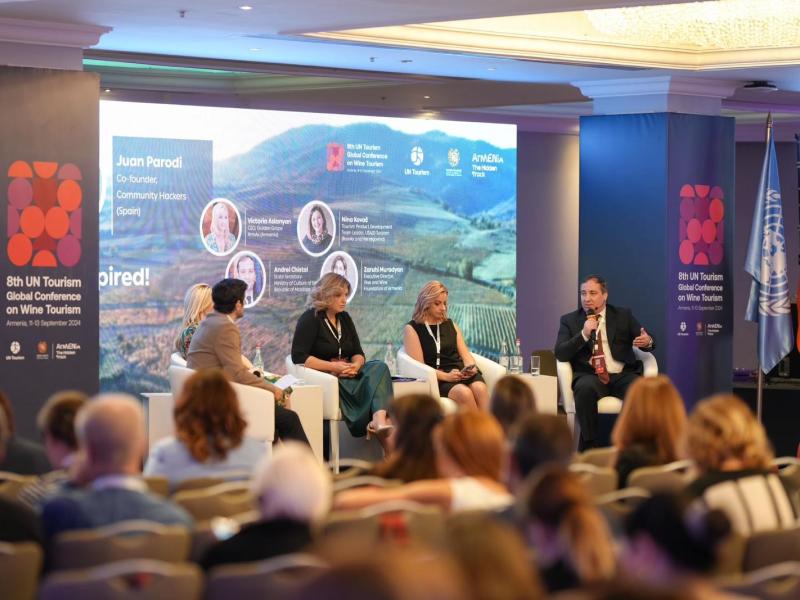Global Wine Tourism Conference Explores Tradition, Innovation

The 8th edition of the Global Wine Tourism Conference, hosted by UN Tourism, brought together experts from around the world to examine the balance between preserving heritage and embracing innovation in the wine tourism sector. Held in Armenia, the event gathered over 300 participants from more than 25 countries, marking a significant moment for the country's growing wine tourism industry.
With a focus on the potential of wine tourism to drive cultural preservation, create jobs, and stimulate economic growth, the conference explored how this industry can strengthen regional development and cohesion. Zurab Pololikashvili, Secretary-General of UN Tourism, emphasized the importance of integrating history and local traditions into the wine tourism experience, noting that wine is not just a product but a reflection of the land and people behind it.
Gevorg Papoyan, Armenia’s Minister of Economy, underscored the sector's impact on rural communities, noting how it supports local businesses while preserving a rich heritage of winemaking that dates back over 6,000 years.
Discussions centered on the growing interest in experiential tourism, where visitors want more than just wine tastings—they seek deeper connections with the culture and people behind each bottle. Sessions explored the role of digitalization, storytelling, and the creation of wine routes to meet changing consumer preferences, especially among Generation Z.
The event also highlighted the need for education and skills development in wine tourism, stressing the importance of collaboration between industry stakeholders to create a unified approach. Sustainability was a key topic, with participants discussing the need for climate-conscious practices to ensure the future of wine tourism.
Armenia showcased its unique contributions to the sector, from its ancient winemaking traditions—like those found at the 6,000-year-old Areni-1 cave—to its modern wineries, positioning itself as a leader in both heritage preservation and innovation.














